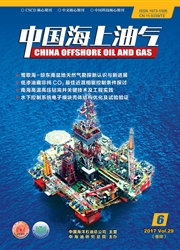

 中文摘要:
中文摘要:
LH21-1—1井位于珠江口盆地白云凹陷北坡一番禺低隆起区,在该井储层岩屑样品中发现了大量沥青,其产状为片状或球状。顺磁共振光谱分析、溶解实验、气相色谱分析及红外光谱分析结果表明,球状沥青为磺化沥青(为钻井过程中的泥浆添加剂)的地质变异体,片状沥青为烃类运移沥青。根据片状沥青生物标志化合物的组成特征,结合前人研究成果及该地区地质背景进行综合分析,推测LH21—1—1井储层片状沥青为白云凹陷恩平组浅湖相和文昌组浅湖相烃源岩生成的烃类运移进储层后经后期改造而形成。这一结论对该区古油藏勘探有重要意义。
 英文摘要:
英文摘要:
Large amounts of bitumen was found in cuttings from reservoir intervals of well LH 21-1- 1, located on Panyu low uplift, the north slope of Baiyun depression, Pearl River Mouth basin. The bitumen is sheet or spherical in attitude, and several experimental analyses, such as paramagnetic resonance spectrum analysis, solubility in chloroform, gas chromatography (GC) analysis and infrared ray spectrum analysis, have indicated that the spherical and sheet samples are a geological variation of soltex (a mud additive) and a true bitumen from migrated hydrocarbon respectively. According to an integrated analysis of biomarkers from the sheet bitumen, the results of previous studies and the geological setting, it can be concluded that the sheet bitumen is an altered substance of migrated hydrocarbon provided by two set of source rocks in shallow lacustrine facies, i.e. Enping Formation and Wenchang Formation in Baiyun depression. This conclusion may be very important to exploration of fossil reservoirs in this region.
 同期刊论文项目
同期刊论文项目
 同项目期刊论文
同项目期刊论文
 期刊信息
期刊信息
